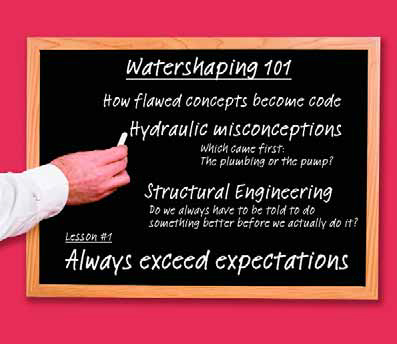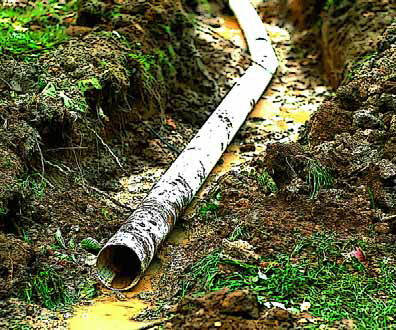ARTICLES
Advance Search
Aquatic Health
Aquatic Health, Fitness & Safety
Around the Internet
Aquatic Culture
Aquatic Technology
Artful Endeavors
Celebrity Corner
Life Aquatic
Must-See Watershapes
People with Cameras
Watershapes in the Headlines
Art/Architectural History
Book & Media Reviews
Commentaries, Interviews & Profiles
Concrete Science
Environment
Fountains
Geotechnical
Join the Dialogue
Landscape, Plants, Hardscape & Decks
Lighter Side
Ripples
Test Your Knowledge
The Aquatic Quiz
Other Waterfeatures (from birdbaths to lakes)
Outdoor Living, Fire Features, Amenities & Lighting
Plants
Ponds, Streams & Waterfalls
Pools & Spas
Professional Watershaping
Structures (Editor's Notes)
Travelogues & History
Water Chemistry
WaterShapes TV
WaterShapes World Blog
Web Links
Around the Internet
Aquatic Culture
Aquatic Technology
Artful Endeavors
Celebrity Corner
Life Aquatic
Must-See Watershapes
People with Cameras
Watershapes in the Headlines
It might sound a bit strange to put it this way, but when it comes to design work, one of the most useful things you can do is to think about how you think about design. If you’re like me and have been working as a watershape designer for more years than you care to count, much of what you do is now second nature. But if you think back to the way it was when you first started – and if you’re anything like me – little or none of what you did felt natural or easy. In my case, I had to process every step methodically, sometimes awkwardly and even painfully on occasion. That’s why I wish, back in those early days, that I’d
I grew up in the Phoenix area and have known about Frank Lloyd Wright’s Taliesin West all my life. It was kind of unavoidable: One of the major streets here is named after Wright; the area is marked by examples of architecture that directly reflect his influence; and pretty much everyone in town knows that it was the place Wright used as a summer home while teaching his numerous protégés about his approaches to project design and execution. For my part, however, my closest association with the facility had to do with the fact that my dad routinely delivered produce to the 600-acre facility and often shared stories about the unusual buildings and the occasionally eccentric people he met there. Several decades passed in which I became a watershaper who specializes in contemporary designs, but until quite recently I had never been to Taliesin West. That seems crazy given its vast influence on design in this region, but I made up for my information deficit in a big way last November, after I received a call from a representative of the facility who wanted to speak with me about restoring the facility’s famous
For decades, controversy has surrounded the initial interactions of water and cementitious finishes in pools and spas – controversy that has led to heated debate, bad blood, litigation and very little by way of resolution. But that hasn’t stopped numerous organizations and individuals from working toward an answer, says Randy Dukes, who discusses here an
If there’s one thing all ponds and lakes have in common (beyond the obvious fact that they all contain water), it’s that they’re as different as snowflakes – highly idiosyncratic, often challenging and sometimes almost willful in the way they resist being manipulated. For the past 35 years, we at Diversified Waterscapes (Laguna Niguel, Calif.) have just about seen it all as specialists in maintaining man-made ponds and lakes and in remediating those that have fallen on hard times and suffer with severe problems. We’ve found that every situation is different and that figuring out what’s going on involves the evaluation of countless variables – some obvious and easy to read, others less so. For all that, our experience tells us that the serviceability and sustainability of ponds and lakes is for the most part determined long before we come on the scene – even before they are filled with water. When they’ve been designed and installed with a few key principles in mind, we find them to be cooperative and affordably manageable. If a few of the more common mistakes are made, however, it’s a completely different and far nastier
One of the great things about watershaping is how the work can lead you to unexpected places where you sometimes encounter vastly different ways of doing things. In the past few years, for instance, my design work has led me to design a number of projects in the great open spaces of western Canada – many of which have been built by Gene Brown of Valley Pools in Kelowna, British Columbia. Working with this true professional has taught me a great deal about the precision and power that comes in using poured-in-place concrete as a medium and, as a result, has greatly influenced my thinking about how watershapers everywhere should strive to elevate their own standards of construction. My northward migration began with small steps. In fact, I started off with Valley Pools simply as a consultant for hydraulic and mechanical issues, exchanging plans with Brown and helping him ensure the functionality of some of the more complex systems he found himself doing. At first, I did little more than flesh out the plans mechanically, but I couldn’t help noticing that he was finding some interesting projects – and also observed that he was one of those watershapers who had completely dedicated himself to excellence in all facets of the work. Our usual exchanges were set aside, however, when one day he sent me a set of plans that had been produced by an architect in collaboration with
During the past year, I’ve had the pleasure of teaching hydraulics to watershapers in a variety of classroom settings. It’s been exciting, believe me, particularly because of the eagerness of the students and their hunger for good information. These courses, which have been presented under the auspices of Genesis 3, ask a lot of the students who sign up for them. Especially given the tight economy, I find it enormously encouraging that so many people are focused on spending the time and energy required to
I’ve expended lots of ink in recent issues extolling the virtues of good water management, but that’s nothing new: Through the years, in fact, I’ve written copiously about the need for conservation and sensible stewardship of the most precious of our natural resources. And this all makes sense, given both the needs of our society and the fact that we who read and write for WaterShapes all derive some portion of our livings from the work we do with water. On those levels and more, water may be seen as our
The great poet and philosopher John Donne once wrote, “No man is an island” – a wonderfully simple declaration that none of us is really alone and that we all exist in a world filled with others. There are exceptions, of course, and I’ve run into my share of loners who resist the notion that we are all interdependent on some level. But as I’ve moved through the world and have met people I perceive to be talented or successful in some way, it’s been my observation that they have substantial support systems of one sort or another. That support may come from a spouse, a life partner, a live-in companion or a boy- or girlfriend. Or it may come from
As is true of businesses coast to coast, we at WaterShapes are counting the days until the economy turns around. We do so confident that economic trends are cyclical and that good times have always replaced the bad. But this particular recession has been deeper and longer than most among us have ever witnessed, leaving many companies – including ours – to hunker down and make what we can out of thin stocks of available business. As has been suggested numerous times in the pages of our magazine, however, this is no time for rash
So much has been written and said about our current economic situation that it can get pretty depressing. One thing I hear and read over and over is that “Many people are just stuck, waiting and hoping for things to change.” I can’t help noticing that, for lots of people in government and major industries as well as in small businesses and sole proprietorships, this approach means doing the exact same things they were doing when their days were fat with opportunities. Personally, I think that’s crazy! I believe if I want my situation to change, good times or bad, I must change myself from within and can’t afford to wait for external forces to push me toward prosperity – especially not these days, when nobody really knows what’s






















